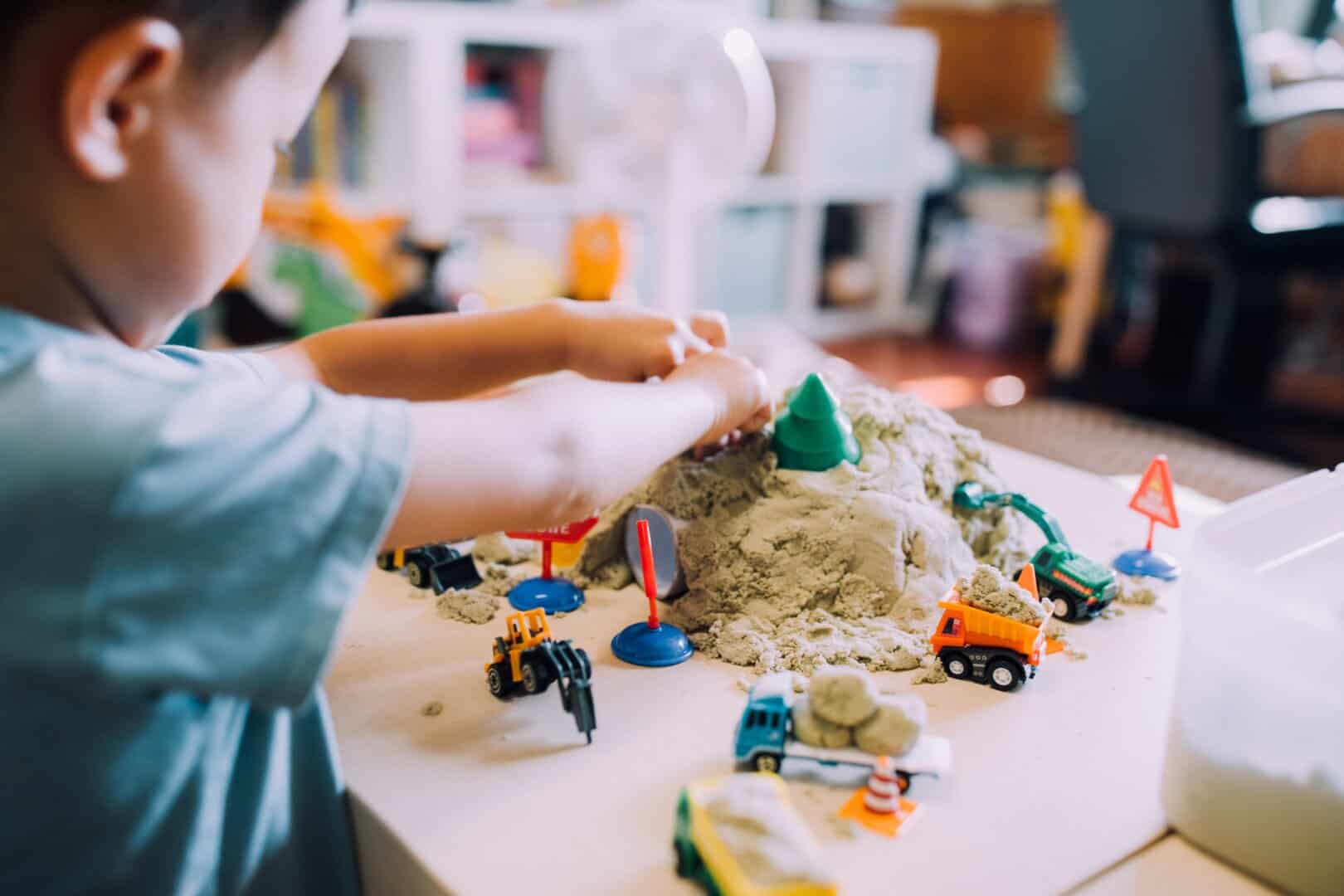Imaginative play and creativity are important aspects of development for all children. For autistic children, imaginative play and creativity may manifest differently, but this does not mean they cannot enjoy and benefit from these activities.
Imaginative play is a type of play in which children use their imagination to create situations, characters, and settings. Through this play, children can explore and learn about the world around them, as well as develop social, emotional, and cognitive skills. Creativity, on the other hand, is the ability to think in new and innovative ways and express original ideas.
Below are some ways in which you can support your children in developing imaginative play and creativity:
Provide structure and guidance: Autistic children may benefit from a structured environment and guidance during play activities. Help them understand and engage in imaginative play by guiding them through different stages of play and offering concrete examples.
Use concrete objects and toys: By providing tangible objects and toys, you can help your children better understand the concept of imaginative play and develop skills to recreate situations and roles. This may include dolls, toy animals, cars, building blocks, and more.
Encourage participation in activities of interest: Involve your children in activities that interest them and capture their attention. This can motivate them to explore new situations and roles in imaginative play while fostering creativity.
Model and teach imaginative play skills: As parents, you can play a crucial role in developing your children’s imaginative play and creativity. By modeling and teaching imaginative play skills, such as taking turns, sharing, and following game rules, you will be supporting their social and emotional development.
Adapt play to the child’s abilities and needs: Each child is unique, and it is important to consider your child’s specific abilities and needs when planning imaginative and creative play activities. Make sure to adapt play to be accessible and meaningful for your child and always celebrate their achievements.
Provide time and space for creativity: Offer an environment where your child feels safe and comfortable to explore their creativity. This may include providing art materials, musical instruments, or building materials, as well as dedicated time and space for your child to express themselves freely.
Be patient and positive: Remember that the development of imaginative play and creativity may take time, and your child with autism may progress at their own pace. Be patient, celebrate their achievements, and maintain a positive attitude throughout the process.
Although children with autism may face challenges in imaginative play and creativity, with proper support, they can learn to engage and enjoy these activities, which can help them develop social, emotional, and cognitive skills. As parents, your love, patience, and guidance will be crucial in your child’s developmental process.
Here are some ideas and examples to help you foster imaginative play and creativity in your children:

Role-playing: Encourage your children to engage in role-playing games, where they can take on different characters or situations. For example, they can play as doctors and patients, teachers and students, or cooks in a kitchen. Use costumes and props to make the game more engaging and realistic.
Cardboard box play: Cardboard boxes can be transformed into a variety of items, such as houses, cars, boats, or castles. Encourage your children to decorate and transform the boxes, and then use them to create imaginative stories and situations.
Storytelling: Read stories together and then encourage your children to recreate the story with toys or enactments. You can prompt your children to change parts of the story, invent new characters, or alter the ending, which will foster creativity.
Building and creating: Provide materials for building and creating, such as building blocks, playdough, paper, and colored pencils. These materials will allow your children to explore different shapes, textures, and colors, and express their ideas through the creation of structures and art.
Adapted board games: Choose board games that encourage imaginative play and creativity, and are suitable for your child’s skill level. You can adapt the rules and objectives of the game as needed so that your child can participate in a meaningful and enjoyable way.
Music and movement: Music is an excellent way to stimulate creativity and imaginative play. You can sing together, play instruments, or even create your own songs. Also, encourage your children to dance and move to the rhythm of the music, helping them explore movement and bodily expression.
Themed settings: Creating themed settings at home, such as a grocery store, a space station, or a jungle, can help your children immerse themselves in an imaginative world. You can use objects and toys you have at home to create the setting and then encourage your children to interact with it.

Outdoor play: Outdoor play offers many opportunities for imaginative play and creativity. Encourage your children to explore their natural surroundings, collect objects such as rocks, leaves, or twigs, and use these objects to create artwork or stories.
Puppet theater: Creating a puppet theater at home can be a fun and engaging activity. You can use store-bought or homemade puppets and encourage your children to invent and perform their own stories or recreate familiar tales.
Collaborative art activities: Engaging in collaborative art projects where you work together can foster imaginative play and creativity. For example, you can paint a family mural, create collages, or build sculptures together.
Creative cooking: Involve your children in the kitchen and encourage them to create their own recipes or food decorations. This will allow them to explore different flavors, textures, and colors, and teach them to think creatively and flexibly.
Scientific experiments: Conducting simple and safe scientific experiments at home can stimulate creativity and logical thinking. You can research together how things work, create hypotheses, and conduct experiments to test your ideas.
Treasure hunt games: Organizing a treasure hunt at home or outdoors can be an exciting and engaging activity. You can hide objects or clues and encourage your children to solve puzzles or follow instructions to find the treasure.
Yoga and relaxation: Practicing yoga or relaxation activities as a family can help your children explore movement, bodily expression, and creativity. Additionally, these activities can be beneficial in reducing anxiety and improving concentration.

Sensory play: Sensory play is an excellent way to stimulate creativity and imaginative play. You can use different materials and textures, such as sand, water, rice, or foam, for your children to explore and experiment with their senses.
Photography and video creation: Encourage your children to explore the world through the lens of a camera or video recorder. You can create photo albums, short films, or documentaries together, allowing them to develop visual storytelling skills and creativity.
Gardening and nature exploration: Gardening and nature exploration can be excellent activities for fostering creativity and imaginative play. You can plant a flower or vegetable garden together, or go on hikes and explore the natural environment, collecting objects to create art or crafts.
Drawing and writing stories: Encourage your children to draw and write their own stories. You can provide them with paper, pencils, and other art materials, and encourage them to create original characters and plots.
Imitation games: Imitation games, such as mimicking animals, people, or objects, can be a fun and creative way to stimulate imaginative play. Play together and take turns guessing what the other is imitating.
Create a themed play corner: Design a themed play corner at home, such as a reading nook, an art station, or a building space. This will give your children a dedicated area to explore their creativity and imaginative play.
Crafts and art projects: Engage in craft and art projects together, such as rock painting, bead necklace making, or mobile construction. These activities will allow your children to explore different materials and express their creativity.
Problem-solving activities: Propose problem-solving challenges that require creative and imaginative solutions. For example, you can ask them to build a tower with unusual objects or invent a machine using recycled materials.
Remember to be patient, understanding, and flexible in your approach. Adapting activities according to your children’s abilities and preferences will allow them to participate meaningfully and enjoy the creative process. By providing them with a loving and stimulating environment to explore imaginative play and creativity, you will be supporting their emotional, social, and cognitive development.













